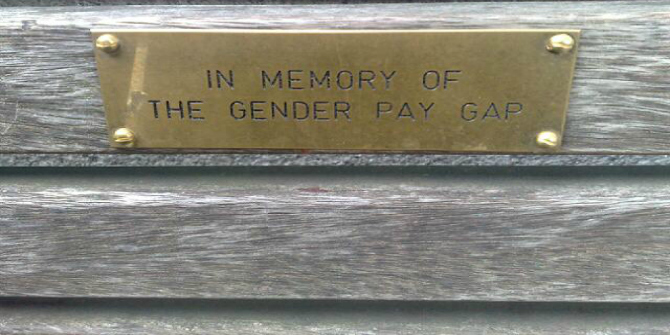
Changing gender relations has meant that young people increasingly expect to share paid work and care in their relationships. Yet there is continued evidence of ‘gender fates’. This can be seen in fewer girls than boys choosing STEM subjects at school, the dominance of men in trades occupations and women in early childhood roles, the predominance of women choosing to work part-time hours, and persistent sex discrimination in the workplace.
How can this divergence between young people’s aspirations for gender equality, and the reality of the gendered status quo, be explained? My recent study, which comprised 123 interviews with young Australians aged between 16 and 26, sheds light on this issue. It suggests that the way men and women negotiate their respective roles at the household level is key to understanding why the dynamics of work and care over the life course have been slow to change.
Expectations of work and the workplace
The young people in the study were undertaking one of eleven different post high school education courses as part of either vocational, pre-vocational or university pathways. They were asked questions about their future intentions for balancing paid work and care with their current or future partner. With few exceptions, they expected to have children at some point in their future lives.
Young men and women expressed a similar desire for egalitarianism and broad adherence to the principles of equal opportunity. They wanted to allocate caring responsibilities and the pursuit of a career across both adult members of the household. However, when pushed for details on these expectations, it was clear that careers for women were seen as more flexible over the lifecourse than those of men.
The anticipated family model was typically characterised by a male breadwinner and part-time female worker who would be the primary caregiver of young children. Women were expected to have a greater number of entry and exit portals into and out of various working roles.
As Acker’s classic work noted, gendering processes in the workplace are strongly linked with those in society outside the formal boundaries of organisations. Women often start to contemplate significant decisions about career directions in their teens and early twenties. They consider which roles will offer greater employment flexibility when starting a family.
The young women in my study suggested that some career pathways were more family-friendly than others. They explained that consulting and self-employment (rather than being an employee), teaching (in contrast to managerial roles) and working for government (as opposed to private enterprise) would offer solutions to work-life imbalance in future careers.
Expectations such as these are not merely abstract. They give shape and direction to future goals, hopes and anxieties and directly impact decisions about careers and care in the present. Some young women, while still in their teens, had anticipated that a management role was incompatible with raising a family and had limited their aspirations accordingly.
Gender differences were evident not only in the types of careers being pursued but preferred hours. Expectations of part-time work have long been linked with significant and sustained career penalties. Both men and women consistently associated part time work with the career pathways of women.
Neither young men nor women anticipated that men would work part-time in order to care for children. Rather, they expected an unbroken, full-time attachment to the labour market throughout their working lives. Providing for the family economically was central to their identities as men, and as ideal workers.
Working from home was believed to be a widespread practice in some sectors and men frequently saw this as a future strategy to achieve work-life integration. In reality, it is often difficult to gain approval to work from home in many organisations and managers insist it is not a substitute for childcare. More fundamentally, the intention to use work from home arrangements constituted only a minor adjustment to a standard, uninterrupted full-time career.
Views on gender roles
The structural conditions of work and the workplace were not the only forces shaping expectations of paid work and care. Ideological expectations of appropriate roles for men/women and mothers/fathers were also important.
Almost without exception, the young people I interviewed expected that mothers would be the primary caregivers of young children, especially when they were under school age. Care provided by mothers, in contrast to fathers or early childhood educators in the formal care sector, was thought to be beneficial for raising emotionally well-adjusted children. Hence, it was seen as ‘obvious’ or ‘normal’.
This commitment was expressed by women as a personal choice. It has been noted that translating equality into the language of individual tastes can be an effective way to bridge contradictions between expectations and realities.
However, men were not neutral in decision-making. Some men expressed clear views about the timing and extent of their partner’s participation in paid work during the period of early family formation. Others thought they would ‘allow’ their partners to make these decisions.
There were very few examples of resistant femininities at the household level. This is where women explicitly negotiate about alternative ways to share care and the economic penalties attached to flexible careers and to challenge the status quo around gender equality more broadly.
Promoting gender equality amongst young adults
Career flexibility is less about individual decision-making as it is about household divisions of market and domestic work in the context of long-running gender contracts. While young men expect career flexibility across type of work and within a particular role, they rarely expect to reduce the extent of their engagement with paid work over the life course.
Many young women are no longer prepared to forego the opportunities for autonomy and financial security of paid work. However, many continue to subscribe to a modified ideal of traditional motherhood.
By swimming with the current, men and women lock in place the gender status quo. This reality appears to go largely unchallenged in early relationships. There is clearly a need for more targeted discussions with young people, and young women especially, that promote reflection and negotiation around career flexibility and the division of paid work and care.
♣♣♣
Notes:
- This blog post is based on the author’s paper How ‘flexible’ are careers in the anticipated life course of young people?, Human Relations journal
- The post gives the views of its author, not the position of LSE Business Review or the London School of Economics.
- Featured image credit: Kids, by Myles Tan, under a CC0 licence
- Before commenting, please read our Comment Policy.
 Paula McDonald is Professor of Work and Organisation and Director of the Work/Industry Research Program in the QUT Business School in Brisbane, Australia. Her research, which primarily addresses issues related to social justice in employment, has been undertaken in a range of industries and sectors including finance, defence, government and community services. Paula has disseminated her work widely including in three edited books and over 60 academic journal articles and to non-academic audiences through media engagement and industry seminars.
Paula McDonald is Professor of Work and Organisation and Director of the Work/Industry Research Program in the QUT Business School in Brisbane, Australia. Her research, which primarily addresses issues related to social justice in employment, has been undertaken in a range of industries and sectors including finance, defence, government and community services. Paula has disseminated her work widely including in three edited books and over 60 academic journal articles and to non-academic audiences through media engagement and industry seminars.





